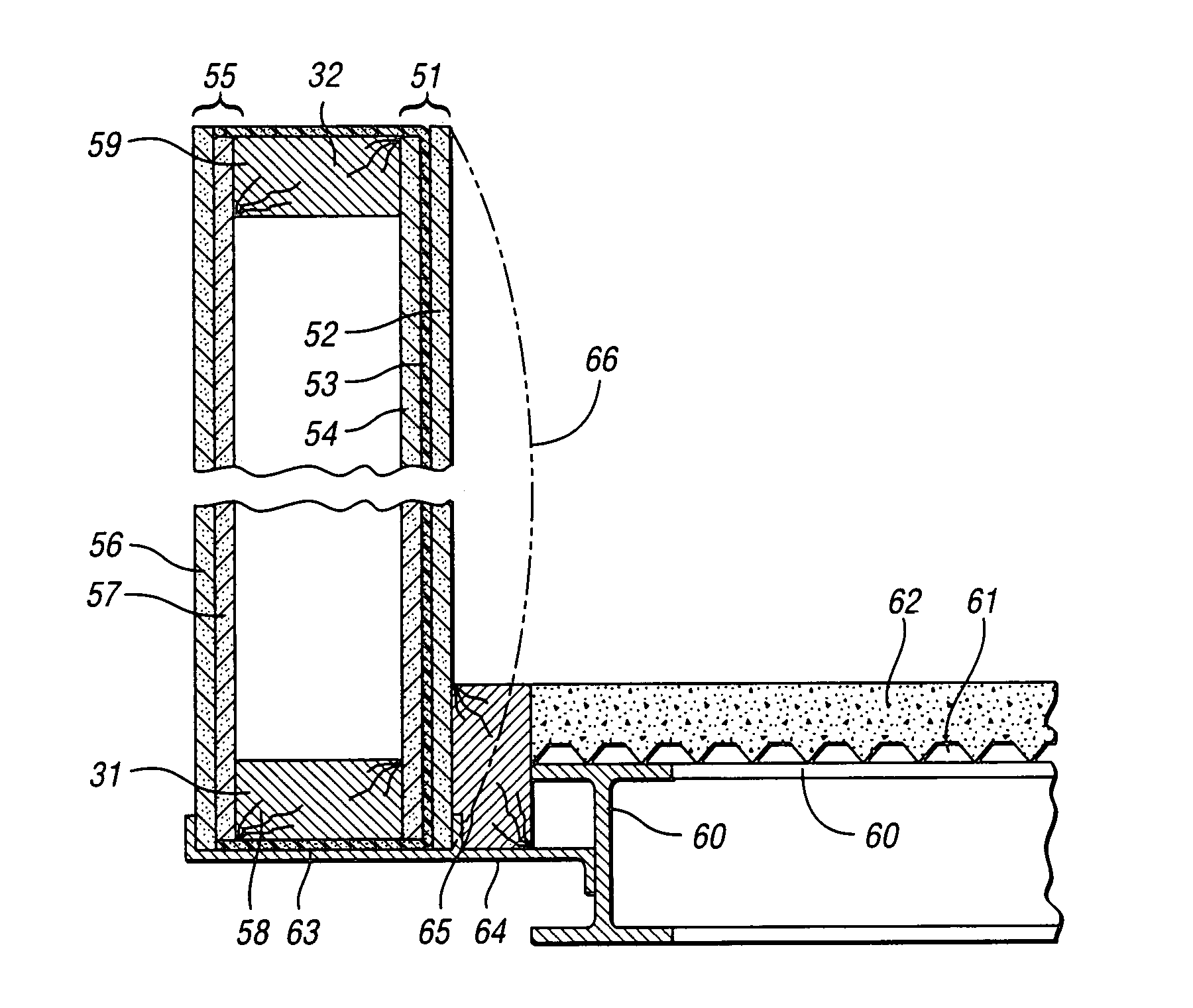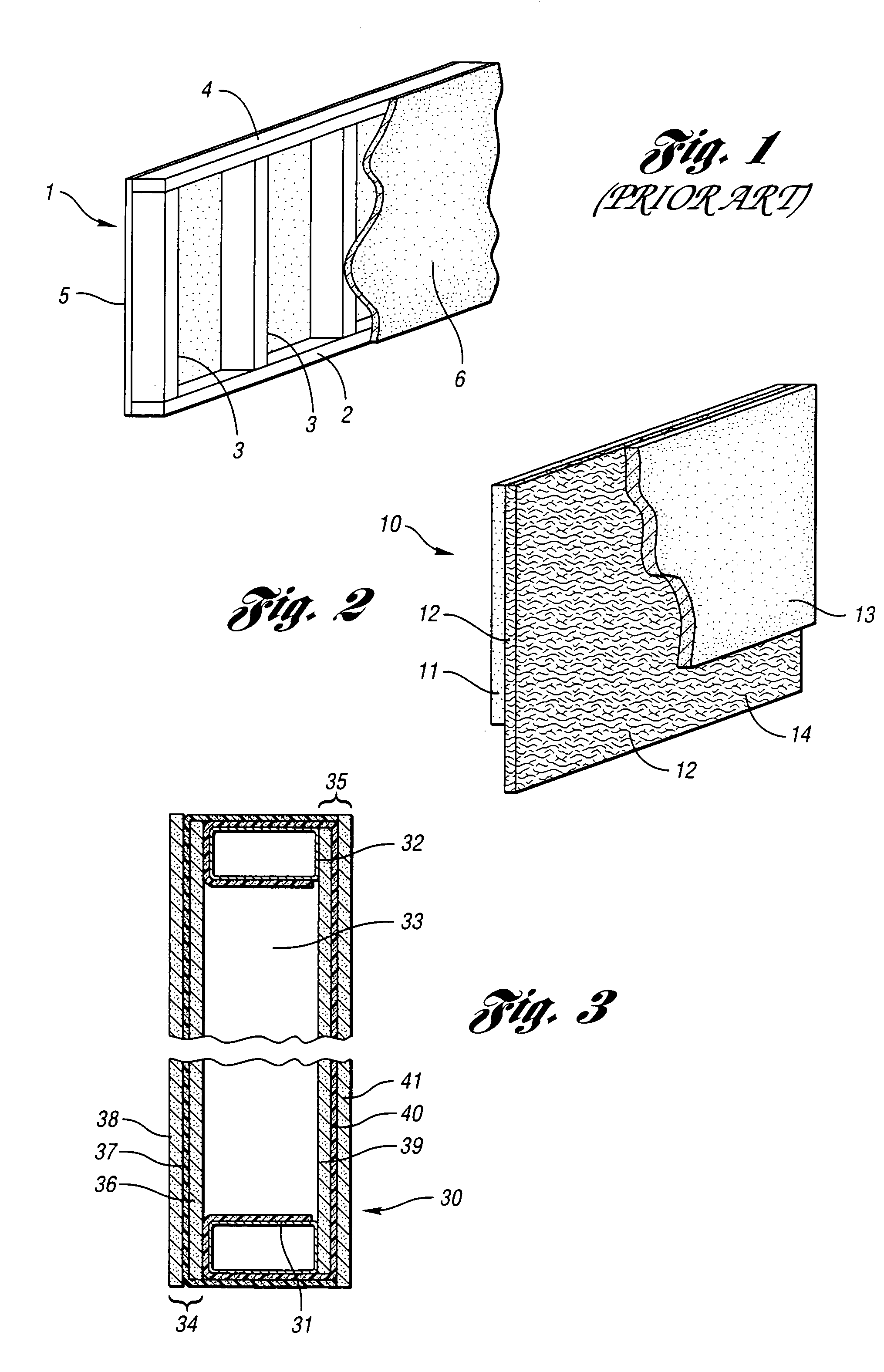Blast resistant prefabricated wall units
a prefabricated wall and insulating technology, applied in building components, building types, constructions, etc., can solve the problems of large projectiles, limited blast resistance structures in prior times, and large projectiles
- Summary
- Abstract
- Description
- Claims
- Application Information
AI Technical Summary
Benefits of technology
Problems solved by technology
Method used
Image
Examples
examples 2 and 3
[0038]Blast resistant walls are prepared as described in FIGS. 2 through 4. In each case, one panel is constructed in accordance with FIG. 2, consisting of two layers of ⅝ type X gypsum board, having one layer of TYFO® blast glass in between the layers. TYFO® blast glass consists of woven fiberglass in an epoxy resin matrix. The total thickness is about 0.125 inch. The fiberglass continues over the bottom of the sole plate and top of the top plate. The opposing wall is of two layer ⅝ inch type X gypsum board without fiberglass. The fiberglass is unidirectional e-glass supplied as a stitched unidirectional fabric, the direction of the strands being perpendicular to the length direction of the sole and top plates.
[0039]Two blast tests were constructed, in the first case with the fiber reinforced panel facing the interior of the chamber, while in the second case, the fiber reinforced panel faced the exterior of the chamber. Upon detonating the explosive charge, bending deformation of t...
PUM
 Login to View More
Login to View More Abstract
Description
Claims
Application Information
 Login to View More
Login to View More - R&D
- Intellectual Property
- Life Sciences
- Materials
- Tech Scout
- Unparalleled Data Quality
- Higher Quality Content
- 60% Fewer Hallucinations
Browse by: Latest US Patents, China's latest patents, Technical Efficacy Thesaurus, Application Domain, Technology Topic, Popular Technical Reports.
© 2025 PatSnap. All rights reserved.Legal|Privacy policy|Modern Slavery Act Transparency Statement|Sitemap|About US| Contact US: help@patsnap.com



